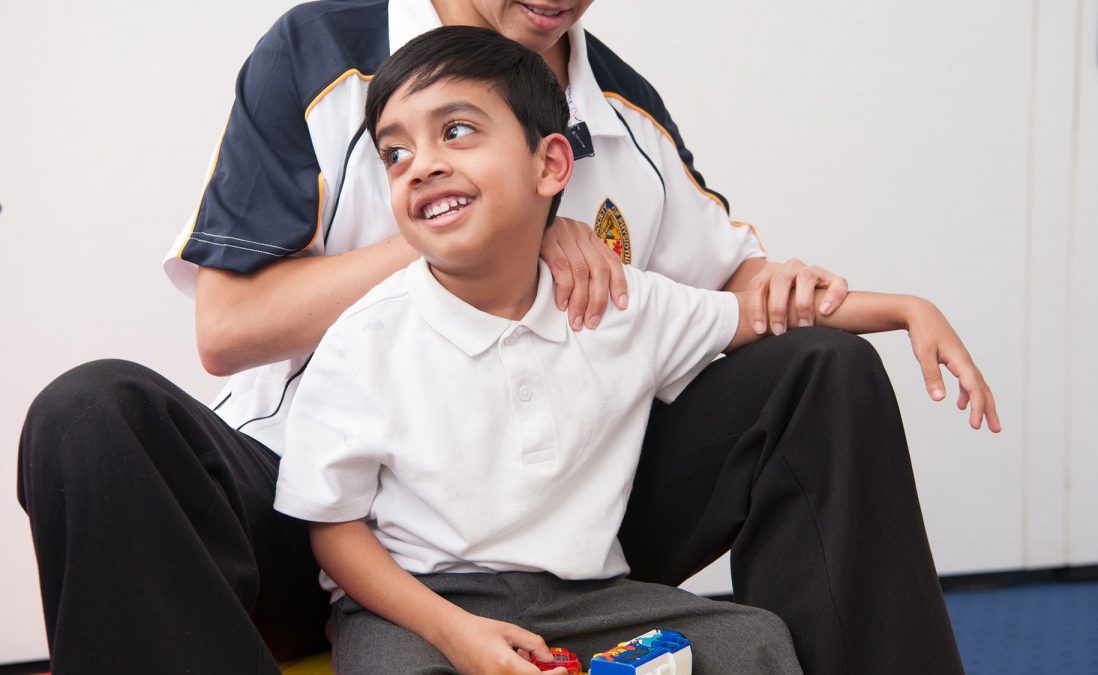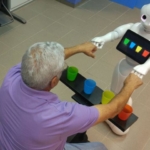Exercising at home improves walking ability in children with CP
A structured home-based exercise program can improve walking ability in children with cerebral palsy (CP), a new study has found. Results of the research were published in Journal of Pediatric Rehabilitation Medicine.

How can physiotherapy help with cerebral palsy? Chartered Society of Physiotherapy UK
Marisa Wexler MS, Cerebral Palsy News Today August 30, 2019
Physical exercise programs and therapies can be beneficial for people with CP, but participation can require dealing with numerous financial and logistical obstacles. Home-based exercise programs can sidestep some of these obstacles.
The study details results from a clinical trial in Malaysia, where 11 children with CP (seven male, four female, average age 10.25 years) participated in an eight-week, structured, home-based exercise program that was specifically designed for children with CP who are able to walk.
The program has three phases:
| Phase 1 | (pre-intervention), in which patients become familiar with the program and undergo physical assessments (at four weekly intervals) prior to beginning the intervention |
| Phase 2 | (intervention), when the program is implemented at home and participants undergo physical assessments three times over eight weeks |
| Phase 3 | (post-intervention), at which time follow-up assessments are conducted at one and three months after the intervention |
The home-based program is composed of three main exercise modules for the upper and lower limb muscles: aerobic fitness training, muscle strengthening, and stretching exercises.
Motor function was measured with the gross motor function measure-66 (GMFM-66), walking ability was assessed via 6-minute walk test (6MWT), and movement efficiency was measured with the physiological cost index (PCI).
Comparing average scores before and during the intervention, 6MWT total distance increased significantly from 334 to 381 meters (365 to 416 yards), as did walking speed in this test, from 56.0 to 63.4 meters a minute (61 to 69 yards minute). After the program (Phase 3), these values decreased slightly, but still were higher than before the intervention (378 meters, or 413 yards) or Phase 1 (62.9 meters per minute, 68 yards per minute).
Similarly, average GMFM-66 scores increased significantly from before (91.88), during (93.38), and after (95.25) the program. But analysis of effect size (a statistical tool that basically determines whether two groups are different) suggested that the change in walking tests was more pronounced.
PCI scores, which evaluate movement efficiency, improved slightly, but the difference was not statistically significant.
“Overall,” the researchers wrote, “these results showed the positive effect of [the structured home-based exercise program] on the walking distance, speed and GMFM-66 score of the study participants.”
The researchers also noted that, according to logs of exercise turned in by seven of the participants, the average time for a single exercise session increased from 16.9 minutes in the second week of the program to 23.5 in the seventh week, indicating that the participants’ endurance increased over the course of the program.
This was a very small study, so further research will be needed to reinforce the results. Still, the researchers concluded that the program “is a potential, practical, and structured home-based exercise programme that can improve the walking function of children with ambulant CP.”
| Marisa Wexler MS |
| Marisa holds an MS in Cellular and Molecular Pathology from the University of Pittsburgh, where she studied novel genetic drivers of ovarian cancer. She specializes in cancer biology, immunology, and genetics. Marisa began working with BioNews in 2018, and has written about science and health for SelfHacked and the Genetics Society of America. She also writes/composes musicals and coaches the University of Pittsburgh fencing club. |
Source Cerebral Palsy News Today
| References |
Structured home-based exercise program for improving walking ability in ambulant children with cerebral palsy, Fauzi AA, Khayat MM, Sabirin S, Haron N, Mohamed MNA, Davis GM. J Pediatr Rehabil Med. 2019;12(2):161-169. doi: 10.3233/PRM-180538.
| Further reading |
Structured Home Based Exercise Program For Ambulant Cerebral Palsy Children, Norazah Haron, Physiotherapist. Department of Rehabilitation Medicine University of Malaya Medical Centre. 2018. PDF
Physical, occupational, and speech therapy for children with cerebral palsy, McCoy SW, Palisano R, Avery L, Jeffries L, Laforme Fiss A, Chiarello L, Hanna S. Dev Med Child Neurol. 2019 Jul 28. doi: 10.1111/dmcn.14325. [Epub ahead of print]
Effects of Therapeutic Exercise Intensity on Cerebral Palsy Outcomes: A Systematic Review With Meta-Regression of Randomized Clinical Trials, Hsu CW, Kang YN, Tseng SH. Front Neurol. 2019 Jun 21;10:657. doi: 10.3389/fneur.2019.00657. eCollection 2019. Full text
Does Home-Based Progressive Resistance or High-Intensity Circuit Training Improve Strength, Function, Activity or Participation in Children With Cerebral Palsy? Schranz C, Kruse A, Belohlavek T, Steinwender G, Tilp M, Pieber T, Svehlik M. Arch Phys Med Rehabil. 2018 Dec;99(12):2457-2464.e4. doi: 10.1016/j.apmr.2018.06.010. Epub 2018 Jul 4.
Parents’ Expressions of Concerns and Hopes for the Future and Their Concomitant Assessments of Disability in Their Children, Illum NO, Bonderup M, Gradel KO. Clin Med Insights Pediatr. 2018 Jun 27;12:1179556518784948. doi: 10.1177/1179556518784948. eCollection 2018. Full text
Family-oriented services in pediatric rehabilitation: a scoping review and framework to promote parent and family wellness, King G, Williams L, Hahn Goldberg S. Child Care Health Dev. 2017 May;43(3):334-347. doi: 10.1111/cch.12435. Epub 2017 Jan 12. Review.
Over ground walking and body weight supported walking improve mobility equally in cerebral palsy: a randomised controlled trial, Swe NN, Sendhilnnathan S, van Den Berg M, Barr C. Clin Rehabil. 2015 Nov;29(11):1108-16. doi: 10.1177/0269215514566249. Epub 2015 Jan 30.
Improvement of upper extremity motor control and function after home-based constraint induced therapy in children with unilateral cerebral palsy: immediate and long-term effects, Chen HC, Chen CL, Kang LJ, Wu CY, Chen FC, Hong WH. Arch Phys Med Rehabil. 2014 Aug;95(8):1423-32. doi: 10.1016/j.apmr.2014.03.025. Epub 2014 Apr 14.
Assessment of family needs in children with physical disabilities: development of a family needs inventory, Alsem MW, Siebes RC, Gorter JW, Jongmans MJ, Nijhuis BG, Ketelaar M. Child Care Health Dev. 2014 Jul;40(4):498-506. doi: 10.1111/cch.12093. Epub 2013 Jul 30. Review.
The efficacy of GMFM-88 and GMFM-66 to detect changes in gross motor function in children with cerebral palsy (CP): a literature review, Alotaibi M, Long T, Kennedy E, Bavishi S. Disabil Rehabil. 2014;36(8):617-27. doi: 10.3109/09638288.2013.805820. Epub 2013 Jun 26. Review.
A home-based program using patterned sensory enhancement improves resistance exercise effects for children with cerebral palsy: a randomized controlled trial, Wang TH, Peng YC, Chen YL, Lu TW, Liao HF, Tang PF, Shieh JY. Neurorehabil Neural Repair. 2013 Oct;27(8):684-94. doi: 10.1177/1545968313491001. Epub 2013 Jun
Effects of home-based locomotor treadmill training on gross motor function in young children with cerebral palsy: a quasi-randomized controlled trial, Mattern-Baxter K, McNeil S, Mansoor JK. Arch Phys Med Rehabil. 2013 Nov;94(11):2061-7. doi: 10.1016/j.apmr.2013.05.012. Epub 2013 Jun 5.
Can a six-week exercise intervention improve gross motor function for non-ambulant children with cerebral palsy? A pilot randomized controlled trial, Bryant E, Pountney T, Williams H, Edelman N. Clin Rehabil. 2013 Feb;27(2):150-9. doi: 10.1177/0269215512453061. Epub 2012 Jul 30.
Focus on function: a cluster, randomized controlled trial comparing child- versus context-focused intervention for young children with cerebral palsy, Law MC, Darrah J, Pollock N, Wilson B, Russell DJ, Walter SD, Rosenbaum P, Galuppi B. Dev Med Child Neurol. 2011 Jul;53(7):621-9. doi: 10.1111/j.1469-8749.2011.03962.x. Epub 2011 May 13. Full text
Change in basic motor abilities, quality of movement and everyday activities following intensive, goal-directed, activity-focused physiotherapy in a group setting for children with cerebral palsy, Sorsdahl AB, Moe-Nilssen R, Kaale HK, Rieber J, Strand LI. BMC Pediatr. 2010 Apr 27;10:26. doi: 10.1186/1471-2431-10-26. Full text
Relationships between spasticity, strength, gait, and the GMFM-66 in persons with spastic diplegia cerebral palsy, Ross SA, Engsberg JR. Arch Phys Med Rehabil. 2007 Sep;88(9):1114-20.
Family-centered service for children with cerebral palsy and their families: a review of the literature, King S, Teplicky R, King G, Rosenbaum P. Semin Pediatr Neurol. 2004 Mar;11(1):78-86. Review.
Also see
Family-centered and Focused Rehab Most Helpful Therapy for Children with Cerebral Palsy, Study Says in Cerebral Palsy News Today
Study Highlights Differences in Priorities for Parents and Healthcare Providers of Children Who Have CP in Cerebral Palsy News Today






